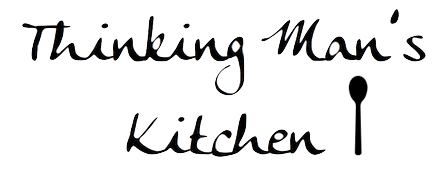A cook’s knives are his or her most basic and, I think, most important, kitchen tools. And yet, when I help out in the kitchens of friends and family, I am frequently amazed by what I see when I check out their knife collections and the condition of the knives therein. With a few exceptions, I see a drawer or knife block or, more likely both, full of a wide assortment of knife styles, shapes, and sizes, all of which have one thing in common: they are not sharp.
Today I want to talk about what I think are the essentials of a cook’s knife collection. I’ll leave knife care and technique for other days.
Because cooks come in all shapes and sizes, each cook will want to select individual knives in the style, size, and weight that suits them best. Your knives should feel good in your hand, be balanced, and be easy to use. Once you have developed good knife skills (practice, practice, practice), your knives should feel almost like extensions of your arm and hand – tools that you pick up and use without thinking about it too much.
The kitchen knife shopper is confronted with a dazzling array of knifes. In truth, one really only needs a few different knives, and I suspect that most experienced cooks find that they have one knife that they use for almost everything.
That said, I’m going to talk about my knives: what I have, why I have them, and how I use them. Keep in mind that I am a man who is (or was) 6’ tall, who weighs 180# or so, and who has long arms. Your knife choices may vary from mine, but I hope that what follows here will be helpful and interesting.

I have three knives that I use every day and for something like 95% of the tasks requiring a knife. The first is an 8” chef’s knife. I use this knife for almost everything: chopping vegetables, mincing garlic, slicing fruit, cutting raw meat and fish. I keep it sharp enough for slicing even ripe tomatoes. It is heavy and large enough for me to halve a large cabbage or a melon or an acorn squash. I love this knife. My wife (5’3, 100#) hates it. It is too heavy and too big for her, although I think the real problem is that our countertops are too high for her.
The second daily use knife is a 3-1/2” pairing knife. I use this for tasks requiring a small blade: trimming strawberries, deveining shrimp, coring and peeling tomatoes, prepping sweet and hot peppers. (I also use this knife when I eat an apple. For some reason, I find it very satisfying to sit in my favorite chair, and eat an apple by using said knife to cut off bite-sized pieces, which I then stab and put in my mouth. I think my dad used to do this.)
The third is a serrated bread knife. Besides the obvious, this knife is also useful for slicing the tops off of artichokes, and oddly enough, slicing tofu.
That’s it, really. Most days I don’t touch another knife, but I do have a few specialty knives that I use occasionally.

The first is a 9” carving knife, used to cut cooked meat and fish. It is wicked sharp, which combined with the slender blade, makes it much better for slicing than the chef’s knife.
The second is a 5-1/2” boning knife. I use this to skin fish filets, and bone chicken. I also use it to cut up mangoes, which is very much like filleting a fish.
The third is a 7” santoku knife that I use for thinly slicing vegetables when there isn’t enough of them to justify dragging out the mandolin.
Some folks seem to obsess about the kind of steel that’s best for kitchen knives. I would say that for most of us “accomplished amateur” cooks, it is best to buy the highest quality knives one can afford from well-regarded manufacturers, and let them pick the steel. My knives are made of “ZWILLING special formula steel”. This is apparently XX50CrMoV15- stainless steel, which is, according to the folks at Knives and Tools.com,
“the most commonly used stainless steel type for kitchen knives by a.o. German manufacturers. It is a good steel type for a very wide public. The rust resistance is high and the cutting characteristics are perfect.
Excellent for family use and professional use where not everyone is careful with the knives [my emphasis]. For info: X stands for stainless, 50 for 0.50% carbon and 15 for 15% Chrome. In addition the steel contains small quantities of Molybdene and Vanadium to improve the grain structure and durability.”
More than I needed to know, for sure.
To summarize: buy a few of the best knives you can afford; buy knives that feel good in your hand; keep them sharp. Enjoy!






1 Reply for "Knives"
jdcatalano May 22, 2018 (8:41 am)
Nice to see that Epicurious mostly agrees with me: https://www.epicurious.com/expert-advice/the-only-3-knives-you-need-article. I think a sharpening steel is a nice addition, but most folks don’t get the angle right and end up doing more harm than good. I know that is certainly true of me.